-
 Bitcoin
Bitcoin $116700
2.16% -
 Ethereum
Ethereum $3830
5.76% -
 XRP
XRP $3.082
4.56% -
 Tether USDt
Tether USDt $1.000
0.04% -
 BNB
BNB $777.8
1.96% -
 Solana
Solana $173.2
5.46% -
 USDC
USDC $0.0000
0.02% -
 Dogecoin
Dogecoin $0.2146
6.85% -
 TRON
TRON $0.3384
0.92% -
 Cardano
Cardano $0.7676
5.51% -
 Hyperliquid
Hyperliquid $39.28
4.90% -
 Sui
Sui $3.723
9.07% -
 Stellar
Stellar $0.4164
6.32% -
 Chainlink
Chainlink $17.36
5.78% -
 Bitcoin Cash
Bitcoin Cash $580.9
3.62% -
 Hedera
Hedera $0.2544
5.50% -
 Ethena USDe
Ethena USDe $1.001
0.02% -
 Avalanche
Avalanche $22.81
3.81% -
 Litecoin
Litecoin $120.8
3.60% -
 UNUS SED LEO
UNUS SED LEO $8.956
-0.35% -
 Toncoin
Toncoin $3.311
4.28% -
 Shiba Inu
Shiba Inu $0.00001266
4.15% -
 Uniswap
Uniswap $10.10
5.97% -
 Polkadot
Polkadot $3.786
4.80% -
 Dai
Dai $1.000
0.01% -
 Monero
Monero $280.4
-4.02% -
 Bitget Token
Bitget Token $4.405
1.69% -
 Cronos
Cronos $0.1480
5.13% -
 Pepe
Pepe $0.00001087
5.67% -
 Ethena
Ethena $0.6348
11.62%
ETH ETF vs. Buying Ethereum Directly: Which is Better?
An ETH ETF offers stock-like access to Ethereum’s price without owning the crypto, while buying ETH directly gives full control and utility but requires managing security and wallets.
Aug 07, 2025 at 01:36 am
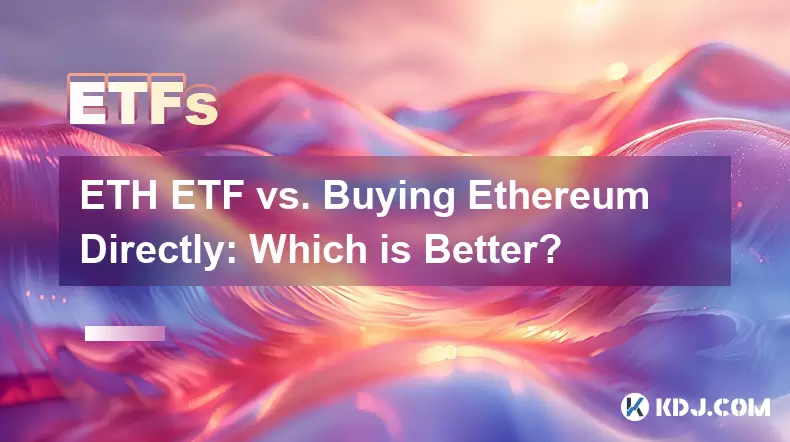
Understanding ETH ETFs and Direct Ethereum Ownership
When evaluating ETH ETF vs. Buying Ethereum Directly, it's essential to understand what each option entails. An Ethereum ETF (Exchange-Traded Fund) is a financial product traded on traditional stock exchanges that tracks the price of Ethereum without requiring investors to own the actual cryptocurrency. These funds are managed by financial institutions and offer exposure to ETH’s price movements through shares. In contrast, buying Ethereum directly means purchasing ETH tokens on a cryptocurrency exchange and storing them in a digital wallet, giving full ownership and control.
The key distinction lies in ownership and custody. With an ETH ETF, investors do not hold actual Ethereum; instead, they own shares in a fund that mirrors ETH’s value. This means no private keys, no wallet management, and no direct interaction with blockchain networks. Conversely, direct ownership grants full access to the asset, enabling use in decentralized finance (DeFi), NFT purchases, or staking. However, it also comes with responsibilities like securing private keys and managing wallet safety.
Accessibility and Regulatory Environment
One major factor in choosing between an ETH ETF and direct Ethereum purchase is accessibility. ETH ETFs are designed for traditional investors who prefer familiar trading environments such as brokerage platforms like Fidelity or Charles Schwab. These platforms integrate seamlessly with retirement accounts (e.g., IRAs), making it easier for individuals to include Ethereum exposure in tax-advantaged accounts. Investors can buy ETH ETF shares during regular market hours just like stocks, without needing to navigate crypto exchanges.
On the other hand, buying Ethereum directly requires using a cryptocurrency exchange such as Coinbase, Kraken, or Binance. This process involves identity verification (KYC), funding the account via bank transfer or card, and understanding wallet security. Regulatory oversight for direct crypto ownership is still evolving, and not all jurisdictions permit unrestricted access to crypto exchanges. ETFs, being regulated under securities law, often face stricter compliance but offer a layer of institutional trust.
Custody and Security Considerations
Security plays a pivotal role when comparing these two investment methods. With an ETH ETF, custody is managed entirely by the fund provider. The underlying Ethereum is held by authorized custodians, and investors rely on the fund’s operational integrity. This eliminates the risk of losing funds due to misplaced keys or phishing attacks. However, it also means investors have no control over the asset and cannot transfer or use it outside the financial system.
In contrast, direct ownership demands proactive security measures. After purchasing ETH, users must store it in a secure wallet. Options include hot wallets (connected to the internet) like MetaMask or cold wallets (offline storage) like Ledger or Trezor. Each carries trade-offs: hot wallets offer convenience but are more vulnerable; cold wallets provide stronger protection but require careful handling. Losing access to a private key results in permanent loss of funds, a risk absent in ETF ownership.
Fees and Cost Structures
Cost is another critical differentiator. ETH ETFs charge an expense ratio, typically ranging from 0.3% to 1.0% annually, which covers management, custody, and operational costs. These fees are deducted automatically from the fund’s assets, reducing the investor’s returns over time. Additionally, brokerage platforms may impose trading commissions or account maintenance fees.
Direct Ethereum purchases involve different cost structures. Exchanges charge transaction fees (taker/maker fees), usually between 0.1% and 0.5% per trade. Network fees, known as gas fees, apply when transferring ETH between wallets or interacting with smart contracts. These fluctuate based on Ethereum network congestion and can spike during high-demand periods. While there are no recurring management fees, users must account for these variable costs when moving or using their ETH.
Liquidity and Use Case Flexibility
Liquidity and utility differ significantly between the two options. ETH ETFs offer high liquidity on major stock exchanges, allowing investors to enter and exit positions quickly during market hours. However, trading is limited to exchange hours and may not reflect real-time crypto market movements, especially during after-hours volatility.
Direct Ethereum ownership provides 24/7 global market access. ETH can be traded across numerous exchanges at any time, transferred peer-to-peer, or used in blockchain applications. This flexibility enables participation in staking, yield farming, NFT trading, and governance voting within decentralized protocols. An ETF cannot offer these functionalities, as the asset remains confined within the traditional financial framework.
Tax Implications and Reporting
Tax treatment varies between ETH ETFs and direct ownership. In most jurisdictions, ETH ETFs are treated like stocks. Capital gains taxes apply when shares are sold, with short-term or long-term rates depending on holding duration. Reporting is typically handled through standard brokerage tax forms (e.g., Form 1099 in the U.S.), simplifying compliance.
Direct Ethereum transactions are often classified as property transfers by tax authorities. Every sale, trade, or use of ETH for goods/services may constitute a taxable event. Investors must track purchase prices, sale values, dates, and transaction purposes. Failure to report can lead to penalties. Tools like Koinly or CoinTracker help automate this, but the burden of record-keeping rests solely on the individual.
Frequently Asked Questions
Can I stake Ethereum if I invest through an ETH ETF?
No. Staking requires holding actual ETH tokens and participating in the Ethereum network’s consensus mechanism. Since ETF investors do not own the underlying cryptocurrency, they cannot engage in staking or earn staking rewards.
Are ETH ETFs available in all countries?
No. The availability of ETH ETFs depends on local financial regulations. For example, the U.S. has approved certain ETH ETFs, while other countries may restrict or not yet recognize such products. Always verify regulatory status in your jurisdiction before investing.
What happens if the company managing the ETH ETF goes bankrupt?
ETF assets are typically held separately from the management company’s balance sheet. In the event of bankruptcy, the underlying Ethereum should remain protected under custodial agreements. However, operational disruptions or delays in share redemption may occur.
Can I transfer ETH from a brokerage account to a personal wallet?
No. If you own ETH through an ETF or a brokerage’s crypto trading service (like Fidelity or Robinhood), you cannot withdraw the actual tokens to an external wallet. Only direct purchases on crypto exchanges allow wallet transfers.
Disclaimer:info@kdj.com
The information provided is not trading advice. kdj.com does not assume any responsibility for any investments made based on the information provided in this article. Cryptocurrencies are highly volatile and it is highly recommended that you invest with caution after thorough research!
If you believe that the content used on this website infringes your copyright, please contact us immediately (info@kdj.com) and we will delete it promptly.
- BlockchainFX, Bitcoin Swift, Crypto Presales: What's the Hype?
- 2025-08-07 19:10:13
- SHIB Community at Crossroads: Shytoshi Kusama's Leadership Under Scrutiny as Elections Loom
- 2025-08-07 18:30:13
- IREN Overtakes: A New King in the Bitcoin Miner Hashrate Race?
- 2025-08-07 16:31:29
- Memecoins Mania: Whales Eye Pepe Dollar (PEPD) as Bonk Cools Off, While MoonBull Hogs the Spotlight!
- 2025-08-07 16:51:17
- Unilabs, PEPE, and Investment Risk: Navigating the Crypto Hype
- 2025-08-07 16:31:29
- Meme Coin Mania: Rug Pulls, CZ-Inspired Tokens, and the Wild West of Crypto
- 2025-08-07 16:57:14
Related knowledge
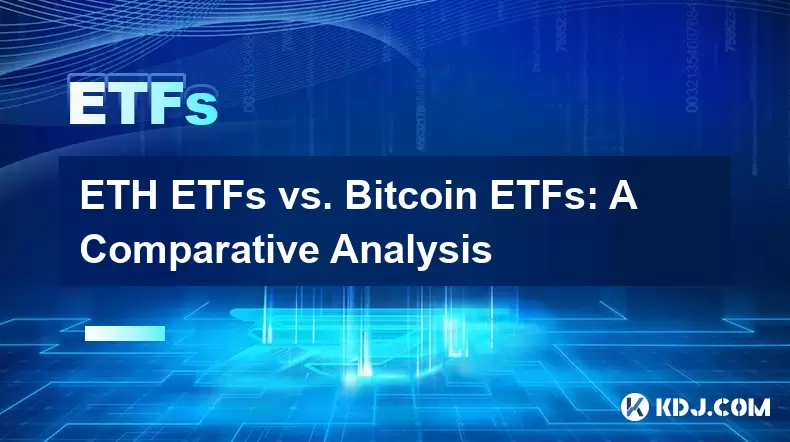
ETH ETFs vs. Bitcoin ETFs: A Comparative Analysis
Aug 07,2025 at 02:08pm
Understanding the Fundamentals of ETH and Bitcoin ETFsExchange-Traded Funds (ETFs) have become a mainstream financial instrument for gaining exposure ...
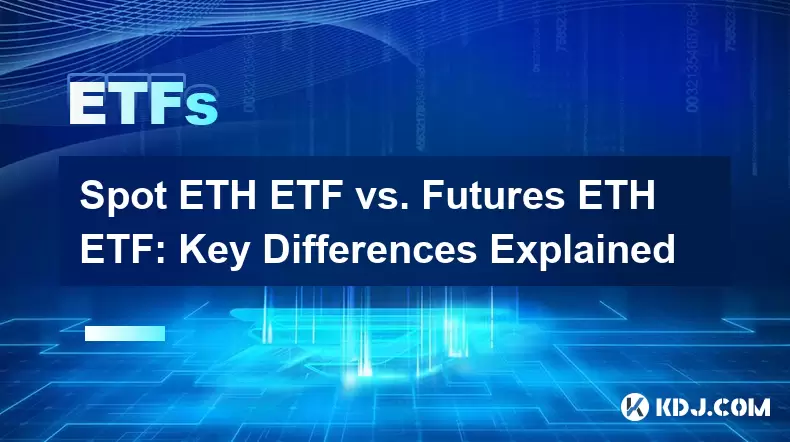
Spot ETH ETF vs. Futures ETH ETF: Key Differences Explained
Aug 07,2025 at 07:31am
Understanding Spot ETH ETFsA Spot ETH ETF is an exchange-traded fund that directly holds Ethereum (ETH) as its underlying asset. This means the fund p...

ETH ETF vs. Buying Ethereum Directly: Which is Better?
Aug 07,2025 at 01:36am
Understanding ETH ETFs and Direct Ethereum OwnershipWhen evaluating ETH ETF vs. Buying Ethereum Directly, it's essential to understand what each optio...
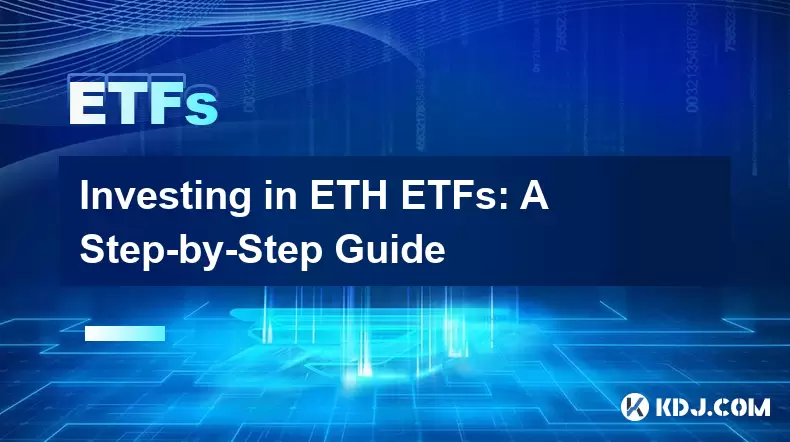
Investing in ETH ETFs: A Step-by-Step Guide
Aug 07,2025 at 05:44am
Understanding ETH ETFs and Their Role in Crypto InvestmentETH ETFs, or Ethereum Exchange-Traded Funds, represent a financial product that allows inves...
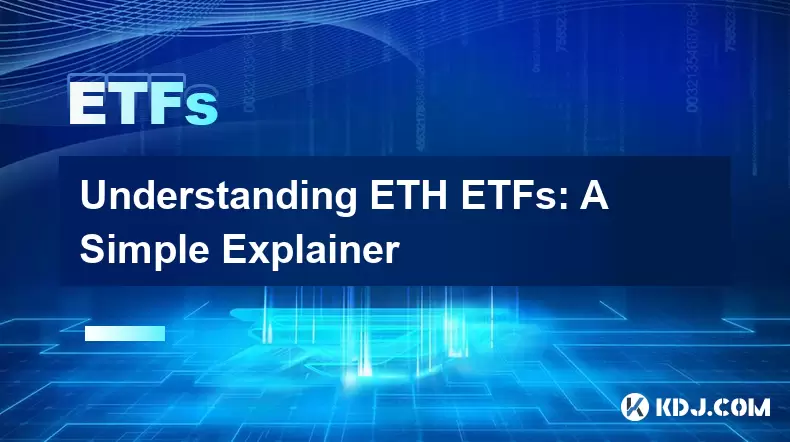
Understanding ETH ETFs: A Simple Explainer
Aug 07,2025 at 09:35am
What Are ETH ETFs and How Do They Work?ETH ETFs, or Ethereum Exchange-Traded Funds, are investment vehicles that allow investors to gain exposure to t...
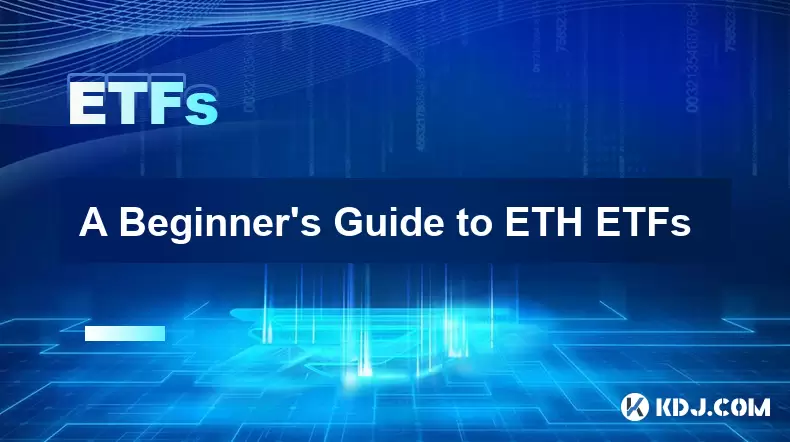
A Beginner's Guide to ETH ETFs
Aug 07,2025 at 06:38am
Understanding What an ETH ETF IsAn ETH ETF stands for Ethereum Exchange-Traded Fund, a financial product that allows investors to gain exposure to the...

ETH ETFs vs. Bitcoin ETFs: A Comparative Analysis
Aug 07,2025 at 02:08pm
Understanding the Fundamentals of ETH and Bitcoin ETFsExchange-Traded Funds (ETFs) have become a mainstream financial instrument for gaining exposure ...

Spot ETH ETF vs. Futures ETH ETF: Key Differences Explained
Aug 07,2025 at 07:31am
Understanding Spot ETH ETFsA Spot ETH ETF is an exchange-traded fund that directly holds Ethereum (ETH) as its underlying asset. This means the fund p...

ETH ETF vs. Buying Ethereum Directly: Which is Better?
Aug 07,2025 at 01:36am
Understanding ETH ETFs and Direct Ethereum OwnershipWhen evaluating ETH ETF vs. Buying Ethereum Directly, it's essential to understand what each optio...

Investing in ETH ETFs: A Step-by-Step Guide
Aug 07,2025 at 05:44am
Understanding ETH ETFs and Their Role in Crypto InvestmentETH ETFs, or Ethereum Exchange-Traded Funds, represent a financial product that allows inves...

Understanding ETH ETFs: A Simple Explainer
Aug 07,2025 at 09:35am
What Are ETH ETFs and How Do They Work?ETH ETFs, or Ethereum Exchange-Traded Funds, are investment vehicles that allow investors to gain exposure to t...

A Beginner's Guide to ETH ETFs
Aug 07,2025 at 06:38am
Understanding What an ETH ETF IsAn ETH ETF stands for Ethereum Exchange-Traded Fund, a financial product that allows investors to gain exposure to the...
See all articles

























































































